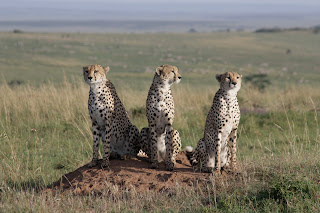Kenya
is a great natural beauty country in Africa. It is a safari destination where
holidays are enjoyable, memorable and lifetime experience. It offers
magnificent National Parks & Reserves with different species of wildlife
living in their natural habitat; there are areas not fully explored and the
opportunity to get off the beaten track away from the crowds.
The
wide open spaces that stretch as far as the eye can see are breath-taking. The
variety of wilderness areas including, National Parks & Reserves and
private ranches & conservation areas offer you the freedom to step out of
your safari vehicle and enjoy a variety of activities. The opulent forests, majestic mountains, breath-taking
scenery, birdlife, ethnic cultures, fresh water lakes, beach holidays,
favourable climate and warm hospitality of the people, all add up to make our
country the best holiday destination.
At Kenya’s far Northern frontier lies one of the natural
wonders of the world. Lake Turkana is a massive inland sea, the largest desert
lake in the world; it is widely known as the Jade Sea, because of the
remarkable, almost luminous, colour of its waters. Turkana has one of the
longest living histories on earth its unique geographical features, the
richness of the surrounding traditional peoples and their cultures,
notwithstanding the abundance of fossils especially hominid fossils, that
earned it the name 'The `Cradle of Mankind' which has contributed more to the
understanding of paleo-environments than any other site on the continent.
On November 3rd 2013, few countries will experience the
viewing of the total solar eclipse, Kenya being one of them. The umbral path of totality will traverse over equatorial Gabon in Western Africa,
Congo, Uganda, Kenya and finally Ethiopia in the Northern part of Kenya in
Turkana. One will witness a
14- 22 seconds sunset total eclipse of the Sun by the shores of Lake Turkana in
a desert landscape. This will be the prime location to capture this wonderful
display of nature in her magnificence. The largely conducive atmospheric
conditions and meteorological records indicate a high percentage of clear skies
during this event with the total eclipse expected late afternoon when both sun
and moon are approaching the horizon. Turkana has been the site of past
eclipses and the skies have always been clear.
The identified location for the best view in Kenya is at the heart of
the Koobi
Fora situated within Sibiloi National Park a World Heritage Site, and known as
the Cradle of Mankind the best chance of clear skies along the
entire eclipse track through Africa from which to experience this amazing
phenomenon.
Tourists‐ both local and international will have the chance to experience
world‐class desert safaris while visiting the Cradle of Humankind (Northern
Tourist Circuit).
To witness such an event is a singularly memorable experience
which cannot be conveyed adequately through words or photographs and combined
with this unique safari touching the most beautiful parks of Kenya and the rich
culture of pokot, Samburu and finally the Turkana people and the El Molo the
country’s smallest tribe, live as hunter-gatherer existence on the shores, in
villages of distinctive rounded thatched huts, it’s a once in a life time
travel adventure!
Some of the attractions include;
- An elephant fossil dating 1.7 million year
- Archaic Kenyan forest that has been fortified for preservations – 12.8 million years old, among other things.

















0 comments:
Post a Comment